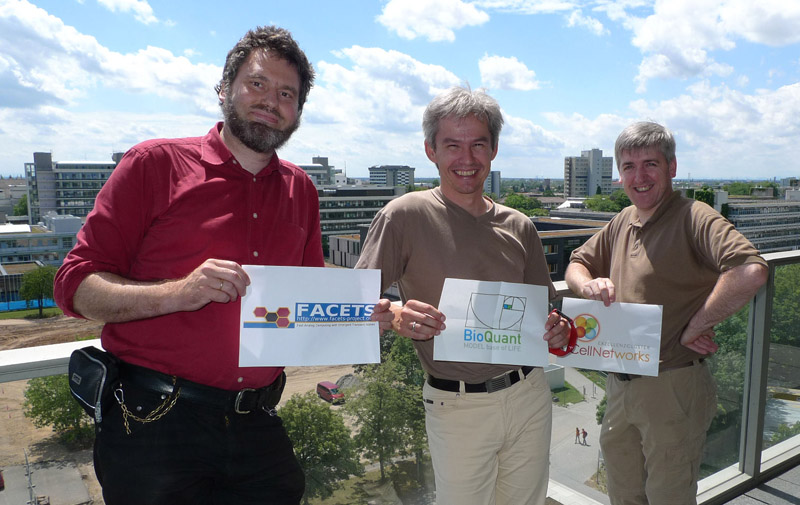Marc Hemberger, Björn Kindler and Daniel Browne show us where ITS @

It’s thanks to EMBL’s IT group that we can maintain contact with alumni via online registrations and updates – an interface which was set up in 2003 by Björn Kindler. Since his departure it has been enhanced by Matthias Helmling to carry out advanced searches and to import the records of all staff from the SAP-HR system automatically when they leave. We caught up with three alumni who chose the IT path precisely for the buzz of helping others: Marc Hemberger, head of IT at BioQuant, Björn Kindler, FACETS project administrator at the Kirchhoff Institute for Physics; and Daniel Browne, systems administrator at Cellnetworks, all at Heidelberg University.
How did you get into IT, and what do you like about it?
MH: After my PhD in physics I decided against more research and opted for a career in software development and later system administration. Communication, talking to people and providing solutions are my favourite aspects of the job. I like being proactive – seeing a need coming up and already having a solution to hand – which requires a good understanding of my ‘customers’ and their work.
BK: IT became a hobby when the first affordable computer system became available, but as I thought the world already had enough book-keeping programs, I did a PhD in biochemistry. During that time, I discovered my passion for extracting something meaningful from a lot of data and replacing repetitive work.
DB: I was one of those people who came across computers only when I started working. During a training course for WordStar the instructor recognised my talent for learning quickly and encouraged me to assist the others. That’s when I realised that I enjoy supporting others as much as I do working with computers.
What did you do at EMBL?
MH: I was at EMBL from 2001-2006, responsible for the administration of mail and backup infrastructures and the general purpose compute cluster. After the departure of Hans Döbbling, I was interim head of IT, providing solutions for completely different user groups. What was particularly special was being able to try something out and getting it right before going to ‘market’.
BK: As IT architect and programmer between 1997 and 2006, I maintained the EMBL webserver and was responsible for data integration applications, i.e. getting data from one system into another. I especially liked the contact with the customers and the opportunity to make their work easier or less repetitive.
DB: I was a desktop systems manager from 1997-2006, responsible for the installation of new computers and printers, hardware/software repairs and first level user support. We were the human face of IT, letting users know what the group was doing and passing on their feedback. The most challenging part was sacrificing our work schedule due to the sheer number and unpredictablity of the requests to IT!
How is your job different now?
MH: We’re building a powerful infrastructure for high throughput and high content microscopy and next generation sequencing. Being at a university with user groups all over campus is very different to working at EMBL, and creating an IT setup at a new institute is exciting.
BK: I’m doing administration for the FACETS project – including, of course, webserver and self-written web applications as well as reporting to the EU. Our project works towards a concept for neuro-inspired computing. The challenging aspect is working with 15 groups in seven countries to strict deadlines.
DB: My responsibilities include project conception, realisation and maintenance. The most obvious difference is the pace of change. EMBL was always able to be at the forefront of IT trends due to its size and budget.
Is there life outside computing?
MH: Yes, I’m chair and swimming instructor for the Deutsche Lebens-Rettungs-Gesellschaft Schwetzingen, and spend the rest of my free time with my 18-month old son, Benedikt.
BK: I’m still a member of the EMBL dive club, and meet with current and former EMBL staff on our trips.
DB: I play golf with the EMBL golf club. I’ve been trying to lower my handicap but am only getting better at losing the balls!